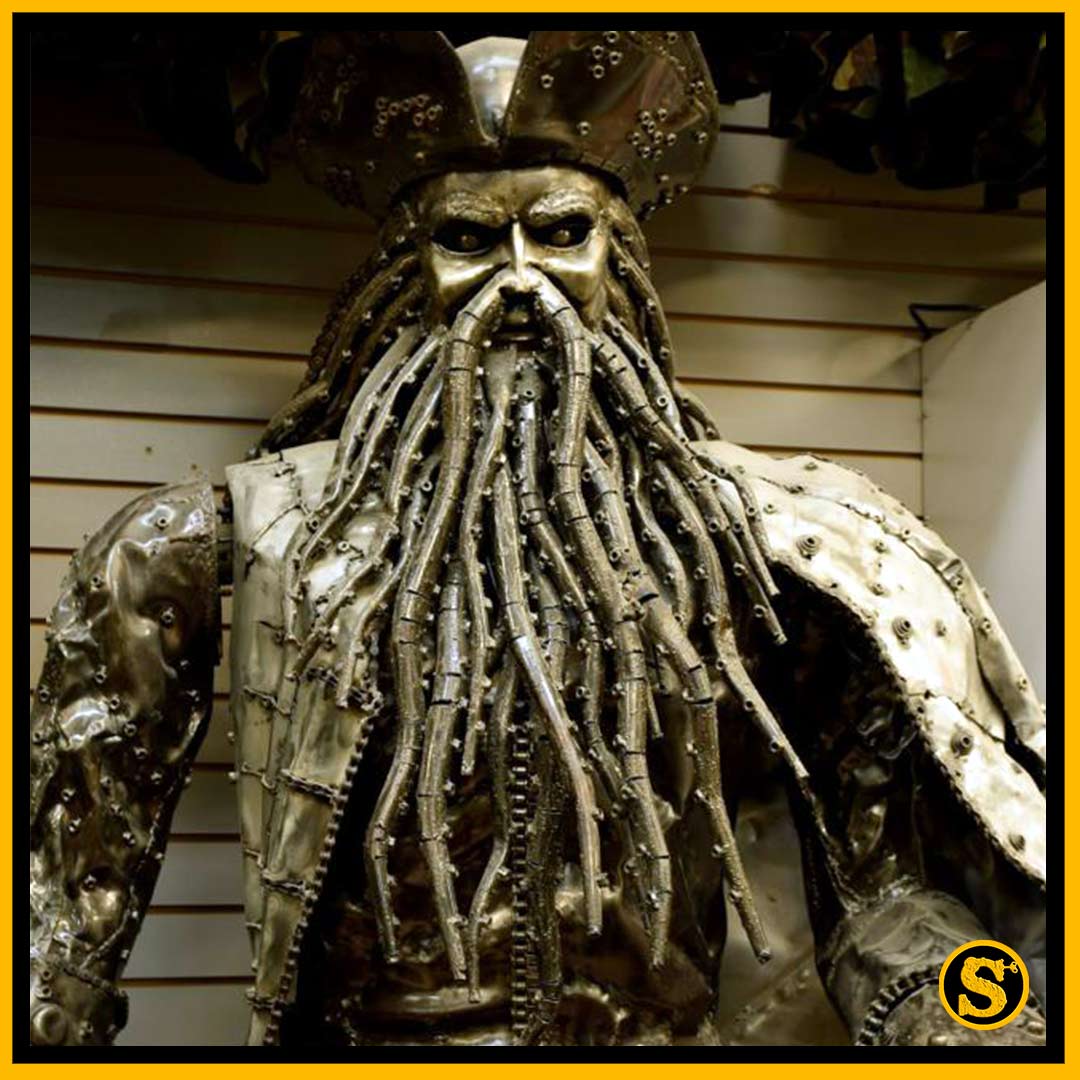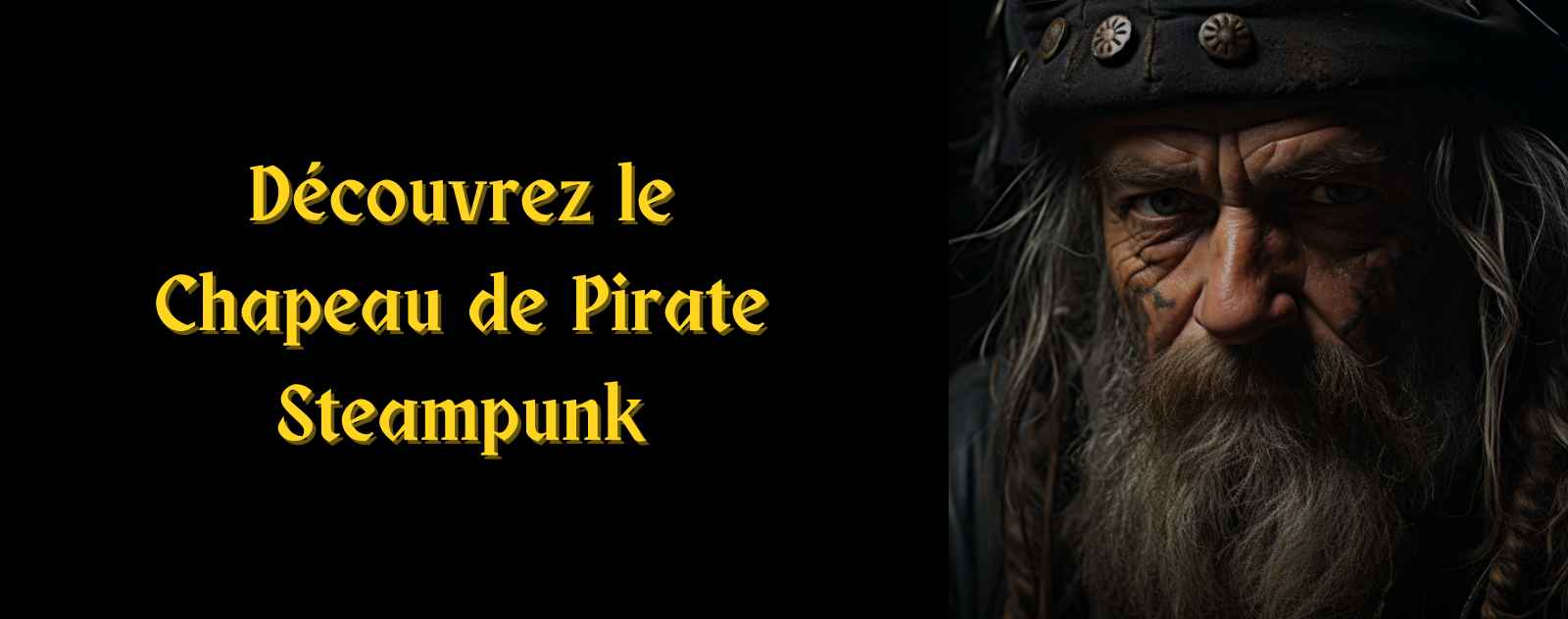The pirate has eternally captured our collective imagination with their wooden leg and faithful parrot. These maritime outlaws have indelibly marked history throughout the centuries, from the ancient Mediterranean to the modern Somali coast. Yet when we examine the curious phenomenon of steampunk pirates, we encounter a fascinating paradox: why do these technological buccaneers of an imagined Victorian future dress and behave like their 17th-century predecessors? This inquiry shall serve as our compass through these interconnected worlds of adventure.
Defining the Steampunk Pirate
The steampunk pirate represents a unique synthesis of historical maritime rebellion and speculative Victorian technology. Unlike their historical counterparts who relied on wind-powered vessels, these fictional buccaneers command steam-powered airships and mechanical marvels while maintaining the aesthetic sensibilities and rebellious spirit of the Golden Age of Piracy. They embody the romantic notion of freedom on the high seas—or rather, the high skies—enhanced by the mechanical ingenuity of an imagined steam-powered world.
The Pantheon of Legendary Buccaneers
Before we delve into the speculative realm of steampunk piracy, we must first understand the historical foundation upon which these fantasies are built. The most notorious pirate in history remains Edward Teach, better known as Blackbeard. Active during the early 18th century aboard his formidable vessel, the Queen Anne's Revenge, this maritime terror dominated the Caribbean Sea and North American waters. His reputation for ruthlessness and cunning has secured him an enduring place in our collective consciousness and popular mythology.
The Five Most Legendary Pirates in Maritime History
Edward Teach (Blackbeard): The archetypal pirate whose very name evokes images of maritime terror and adventure. His strategic mind and theatrical presence made him a legend that transcends historical fact.
Captain William Kidd: This Scottish mariner presents a complex case study in the blurred lines between privateer and pirate. His story illustrates the political machinations that often determined who was labeled a hero or villain.
Anne Bonny: This remarkable Irish woman defied the gender conventions of her era, sailing alongside her lover Calico Jack. Her fierce temperament and courage challenged the masculine stereotypes of piracy.
Mary Read: Like Anne Bonny, Mary Read transcended traditional gender roles by disguising herself as a man. Her friendship with Bonny and their shared adventures aboard Calico Jack's crew represent a fascinating chapter in maritime history.
John "Calico Jack" Rackham: Famous for commanding a crew that included both Bonny and Read, he is also credited with popularizing the iconic Jolly Roger flag design—the skull and crossbones that became the universal symbol of piracy.
The Golden Age: Historical Context and Romance

The Golden Age of Piracy, spanning roughly from the 1650s to the 1730s, provides the historical substrate from which steampunk draws its piratical inspiration. During this epoch, the Caribbean became a theater of maritime conflict where buccaneers, privateers, and outright pirates operated with relative impunity. The collapse of Spanish hegemony in the New World created power vacuums that these maritime entrepreneurs eagerly exploited.
Understanding the motivations of historical pirates illuminates their enduring appeal: the primary objective was invariably economic enrichment through the plunder of merchant vessels and coastal settlements. Yet beyond mere avarice, these maritime rebels were often driven by desires for freedom, adventure, and defiance of established authority. This romantic notion of liberation from societal constraints resonates powerfully with the steampunk ethos of individual ingenuity and rebellion against industrial conformity.
Naval Technology and Maritime Culture
The Evolution of Pirate Vessels
Pirate ships represented the cutting edge of maritime technology adapted for specific tactical purposes. These vessels required speed for pursuit, maneuverability for engagement, and sufficient firepower to overwhelm merchant craft. The typical pirate preferred light, swift vessels such as schooners or brigantines—ships capable of outrunning heavier naval pursuers while possessing enough armament to subdue their prey.
The Pirate Social Contract
Life aboard a pirate vessel operated according to surprisingly democratic principles. The pirate code established rules for the equitable distribution of plunder, compensation for injuries, and the rights and responsibilities of crew members. This maritime democracy stood in stark contrast to the rigid hierarchies of naval and merchant services, offering common sailors a degree of agency unknown in legitimate maritime employment.
The Steampunk Synthesis: Where History Meets Fantasy
Steampunk, as a literary and aesthetic movement, represents a fascinating exercise in temporal synthesis. This genre combines the mechanical ingenuity of the Industrial Revolution with speculative technologies that never came to pass, creating alternative histories where steam power evolved beyond its historical limitations. When pirates enter this equation, they bring with them the romantic ideals of freedom and adventure that complement steampunk's celebration of individual creativity and mechanical innovation.
The marriage between piracy and steampunk creates a rich narrative playground where traditional maritime adventure meets Victorian technological fantasy. While historical piracy existed during the 19th century—providing some authentic foundation for steampunk inspiration—the movement amplifies and romanticizes the piratical archetype, transforming simple sailing ships into magnificent airships and equipping buccaneers with technology far more sophisticated than wooden legs and stuttering parrots.

The Aesthetic Marriage of Two Worlds
Pirate Airships: Perhaps the most iconic element of steampunk piracy is the aerial vessel—magnificent dirigibles and flying ships that serve as the nautical equivalent of traditional pirate vessels. These steam-powered aerial craft, bristling with complex weaponry and mechanical marvels, provide the perfect stage for stories of sky-bound piracy and spectacular aerial boardings.
The Mechanically Enhanced Buccaneer: In the steampunk universe, pirates retain their classic aesthetic elements—bandanas, eye patches, cutlasses—while incorporating Victorian mechanical accessories. Clockwork prosthetics, steam-powered weaponry, and elaborate brass fittings transform the traditional pirate into a figure of both nostalgic romance and technological wonder.
Victorian Innovation meets Piratical Ingenuity: The steampunk world overflows with inventions that enrich piratical narratives: elaborate firearms with intricate mechanisms, pocket watches with multiple temporal functions, and mechanical devices of surprising capability. These objects bring originality and fantasy to the adventures of steam-powered buccaneers.
Welcome aboard, ladies! Discover the pirate corset for women, an essential piece for your adventurous wardrobe.
The Temporal Paradox: Why 17th Century Aesthetics?

This fascinating temporal disconnect reveals much about our collective cultural imagination. In many respects, piracy functions as the maritime equivalent of the American Wild West—heavily romanticized periods whose popular conceptions owe more to fiction than historical fact. The airship pirate never existed in reality because we never truly experienced the age of aerial navigation as imagined in steampunk literature.
When we envision pirates aboard airships, their attire invariably draws from the aesthetic established by Robert Louis Stevenson's "Treasure Island" and similar works—the closest cultural analogy to aerial piracy. The steampunk pirate aesthetic draws primarily from styles popularized during the 16th, 17th, and 18th centuries, well before the 19th century that provides steampunk's temporal foundation.
The Power of Romance and Adventure
This temporal borrowing occurs largely due to the atmospheric power and escapist appeal of the Golden Age aesthetic. Like the Wild West or post-apocalyptic scenarios, the pirate universe has been thoroughly romanticized. It represents a world where adventure beckons from every horizon, where treasures await discovery, and where one can lose themselves in the ocean's immensity, exploring mysterious islands populated by legendary sea monsters.
The geographical and temporal distance that separates us from historical piracy mirrors the way 19th-century Americans perceived their own western frontier. Communication between distant regions was sparse, making remote places seem as exotic as foreign continents. The distance from England's eastern coast to Turkey—once considered "the Orient"—roughly equals that between America's eastern seaboard and its western territories, explaining why Wild West narratives emerged alongside tales of Eastern adventure.
Literary and Cinematic Convergence

Several notable works successfully merge the pirate and steampunk universes, creating rich narrative territories for exploration:
- "Sky Pirates" (1986): This Australian adventure film features aerial buccaneers in an alternate world dominated by steam technology, establishing many visual conventions for the subgenre.
- The Wardstone Chronicles by Joseph Delaney: This children's series features flying ships where pirates play central roles in fantastical adventures.
- "Guns of Icarus" Video Game: This online multiplayer game epitomizes steampunk aerial combat, allowing players to assume roles as sky pirates battling for supremacy among the clouds.
- "Lady Mechanika" by Joe Benitez: This comic series features a protagonist with bionic limbs in a Victorian steampunk universe where technologically enhanced pirates play significant roles.
- "The Alchemist of the Moons" by Jay Lake: This novel seamlessly blends piracy and steampunk in a world where magic and science coexist, featuring pirates as key players in an environment rich with steam-powered inventions.
The first literary pirate to command a flying vessel appeared in 1902 when J.M. Barrie created Peter Pan and his nemesis, Captain Hook. Jules Verne, whose works inspire travel and maritime adventure, brought oceanic exploration closer to the steampunk movement through his creation of Captain Nemo—a character who embodies both technological innovation and rebellious independence.
Conclusion: The Enduring Appeal of Mechanized Adventure
The synthesis of pirates and steampunk reveals fundamental truths about human imagination and our relationship with technology, adventure, and freedom. These combined narratives offer us escape from mundane realities while exploring themes of individual agency, technological possibility, and the romance of exploration. They provide rich territories for examining how we construct mythologies around rebellion, innovation, and the quest for treasure—whether material or experiential.
The steampunk pirate represents more than mere aesthetic fusion; it embodies our desire to combine the best elements of different eras and possibilities. In these mechanical buccaneers, we find the democratic spirit of historical pirates enhanced by the technological marvels of Victorian innovation, creating figures who are simultaneously nostalgic and futuristic, rebellious and ingenious.
As we continue to explore these captivating worlds through literature, film, games, and creative expression, we participate in an ongoing cultural conversation about freedom, technology, and adventure. The steampunk pirate remains a powerful symbol of human creativity—a testament to our ability to transform historical inspiration into speculative wonder.
Visit our steampunk emporium to discover clothing and accessories that bring these mechanical adventures to life. Until our next voyage through the realms of imagination, dear readers, may your adventures be as boundless as the skies above and as ingenious as the finest clockwork mechanism!
Sources and References
- Cordingly, David. "Under the Black Flag: The Romance and Reality of Life Among the Pirates"
- Konstam, Angus. "The History of Pirates: From 1650-1720"
- VanderMeer, Jeff. "The Steampunk Bible: An Illustrated Guide to the World of Imaginary Airships"
- Rediker, Marcus. "Villains of All Nations: Atlantic Pirates in the Golden Age"
- Nevins, Jess. "Encyclopedia of Fantastic Victoriana"
Eugénie Vaporette
Curator-Consultant in Steampunk Aesthetics
Graduate in Victorian Technological History










